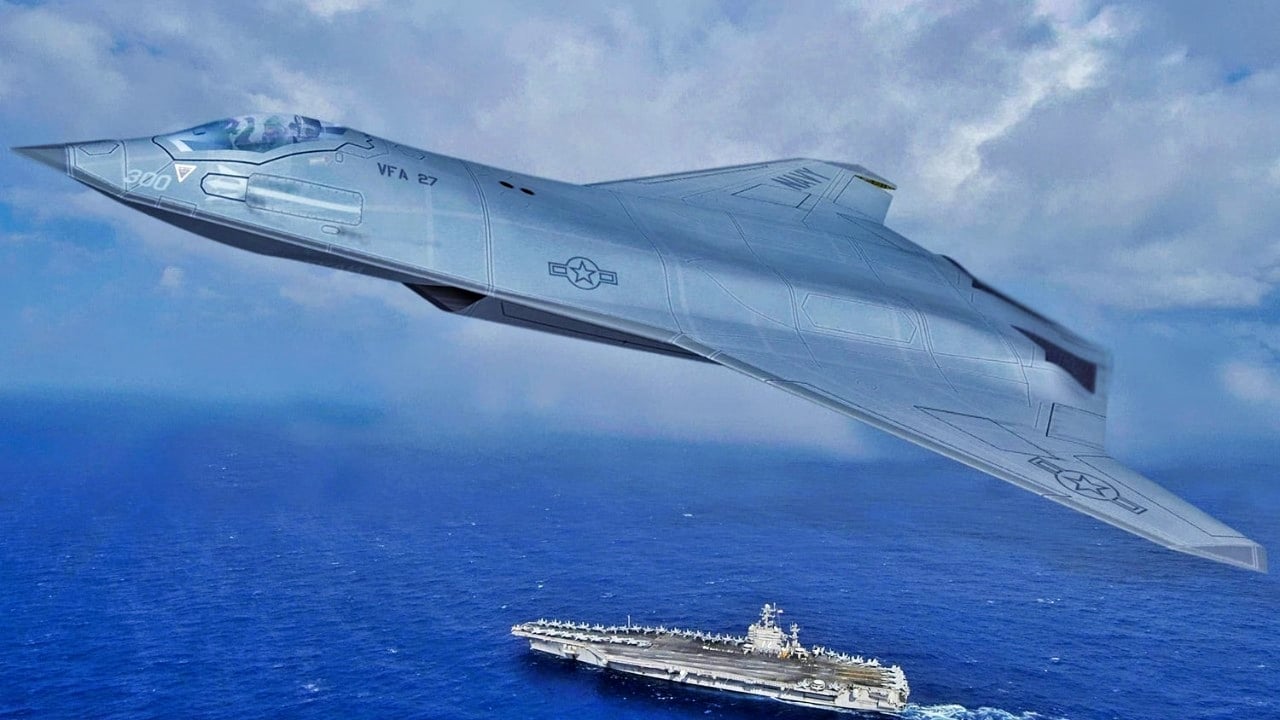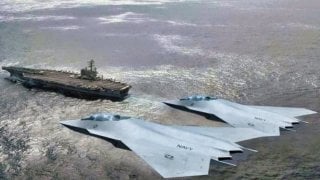The Navy's F/A-XX Fighter Nightmare Explained in 1 Word
The U.S. Navy is advancing its F/A-XX program, a sixth-generation fighter intended to replace the F/A-18E/F and EA-18G aircraft and complement the F-35C in carrier operations.
Disaster?: The U.S. Navy is advancing its F/A-XX program, a sixth-generation fighter intended to replace the F/A-18E/F and EA-18G aircraft and complement the F-35C in carrier operations.
-Despite budgetary challenges that led to a delay of about $1 billion in funding, the Navy remains committed to the project, emphasizing its potential to enhance operational reach, create long-range kill chains, and increase autonomy through artificial intelligence and drone integration.
-The F/A-XX is currently in the "source selection environment," with major defense contractors like Boeing, Lockheed Martin, and Northrop Grumman competing for the contract. A winner is expected to be announced next year.
-Critics argue that the program may be costly with only marginal enhancements over existing capabilities, suggesting that investment in advanced drones paired with current aircraft might be more cost-effective.
The Navy Presses Ahead with the F/A-XX Boondoggle
Sixth-generation warplanes are all the craze today. Every military wants one. In the United States, not only is the Air Force feverishly working on their “Next-Generation Air Dominance” (NGAD) platform, but so too is the Navy looking longingly at the Air Force, dreaming about sixth-generation birds landing and taking off from the USS Gerald R. Ford? Already, the Air Force’s NGAD program is rightly in hot water and at risk of being canceled.
The Navy’s plan for competing with the Air Force is to create their own, costly sixth-generation warplane. But the Navy cannot keep up. Don’t worry, the Air Force can’t keep up with the cost of the NGAD—and the Navy is way far behind where the Air Force in developing their vaunted F/A-XX.
Here’s what the F/A-XX, the Navy’s “NGAD,” has going on.
Updates on F/A-XX
Recent reports indicate a mixed bag in terms of funding and development for the program. At first, there was a significant amount of enthusiasm to build this thing. Now, as budgets are tightening, there have been delays in the creation of this next-generation platform. The Navy delayed about $1 billion in funding for the plane, redirecting those critical fiscal resources toward near-term operational readiness due to fiscal pressures.
The decision reflected broader budgetary challenges faced by the Navy, because the maritime branch is not the only service attempting to “modernize” their forces.
Everywhere the Pentagon looks, they are beset by rising foreign threat actors, both of the traditional state and non-state variations. Some of these rivals, such as China, are increasingly advanced.
To better compete with these challenges, the Americans believe the solution is to spend more money on more complex systems. To better sell these complex platforms to a skeptical Congress, the Navy has highlighted the knock-on effects the F/A-XX program will have in terms of furthering overall technological development for the Navy.
The Navy argues that the F/A-XX will enhance the operational reach of their carrier-based platforms, create long-range kill chains, increase the autonomy of their carrier-based warplanes (because the F/A-XX will include artificial intelligence and drone swarms), and allow for greater survivability of their pilots in contested environments.
Currently, the F/A-XX is in the “source selection environment,” meaning that the country’s three major defense contractors are still vying for the contract (Boeing, Lockheed Martin, and Northrup Grumman).
A winner is expected to be selected by the Navy next year.
The Capabilities of This Fighter
So, obviously, reports of the program’s demise are greatly exaggerated. Indeed, The Aviationist reports that, the Navy is “shielding” the F/A-XX program “from the impacts of the Air Force’s NGAD review.” The Navy’s leadership insists that by separating the development of the Navy’s F/A-XX plane from the Air Force’s embattled NGAD system, they can reduce costs (which is interesting because normally burden-sharing R&D reduces the costs involved).
Things like the F/A-XX’s engine will be quite different from the next-generation propulsion system the Air Force was planning for their expensive NGAD platform. According to Rear Adm. Michael Donnelly, the Navy is looking at a “more derivative” turbofan engine design compared to what the Air Force has been trying to achieve.

Plans for the Fleet
The F/A-XX is supposed to replace the F/A-18E/F and EA-18G fourth-generation warplanes. The F/A-XX is meant to augment the capability of the carrier-based fifth-generation F-35C warplanes that are now (finally) filtering out to the Navy’s fleet.
No matter what the Navy says, though, the F/A-XX will not be a cheap system.
What they should be looking at is building the advanced drones that are designed to fly along with the manned sixth-generation F/A-XX warplane and pairing those drones with the existing warplanes of the carrier fleet.
Regardless of what this author believes, though, it would seem that the Navy is keen on spending our hard-earned tax dollars that will only marginally enhance the US Navy’s carrier-based airframe capabilities.
About the Author
Brandon J. Weichert, a National Interest national security analyst, is a former Congressional staffer and geopolitical analyst who is a contributor at The Washington Times, the Asia Times, and The-Pipeline. He is the author of Winning Space: How America Remains a Superpower, Biohacked: China’s Race to Control Life, and The Shadow War: Iran’s Quest for Supremacy. His next book, A Disaster of Our Own Making: How the West Lost Ukraine, is available for purchase wherever books are sold. Weichert can be followed via Twitter @WeTheBrandon.
Image Credit: Creative Commons.


